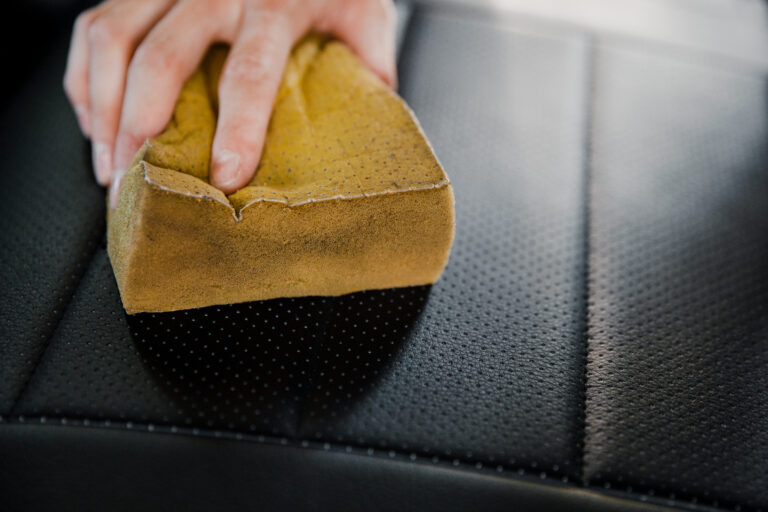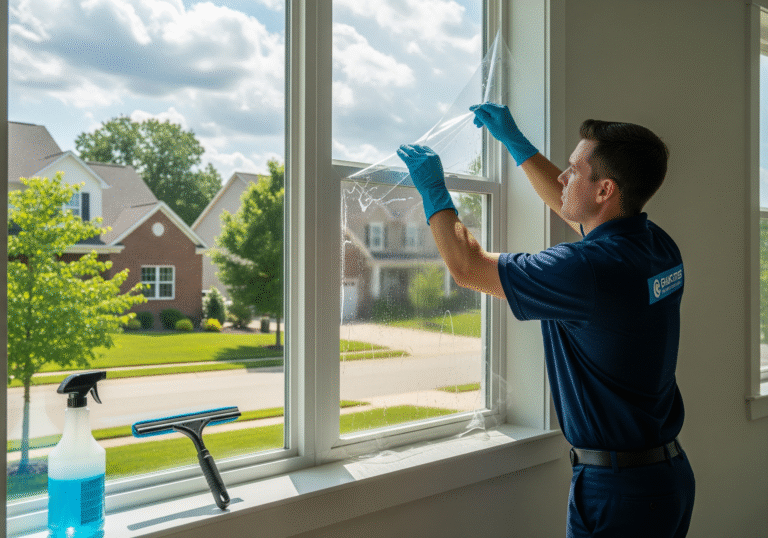Effective Ways to Remove Pet Hair from Furniture: Proven Techniques and Tools

Pet owners often face the daily challenge of removing pet hair from their furniture. This is especially a common nuisance in households with animals that have long or thick fur. Despite regular grooming, it’s almost impossible to prevent pets from shedding hair, which then settles onto various surfaces in your home. With the right tools and techniques, however, it’s possible to effectively remove pet hair from your furniture and maintain a cleaner living environment.
To keep your furniture looking fresh and hair-free, there are several methods and tools that have proven to be highly effective. These strategies vary in their level of difficulty and the amount of time they require, so it’s important to choose methods that best suit your specific needs and preferences. Some commonly used tools include rubber gloves, lint rollers, vacuum cleaners, and specialty pet hair removal brushes.
In this article, we will be discussing various ways to effectively remove pet hair from your furniture without causing any damage to the surfaces. By following these tips and guidelines, you can ensure a comfortable and clean living space for both you and your furry companions.
Preparing Your Furniture for Pet Hair Removal
Identify the Fabric and Care Tag
Before attempting to remove pet hair, it’s essential to examine your furniture and determine the type of fabric it is made of. Look for a care tag or label, typically found on the underside of upholstered furniture or a discreet area. The care tag includes information on specific cleaning methods and any precautions to take when treating the fabric.
Different fabric types require different cleaning tools and techniques. Below is a quick reference table for common types of fabric and their specific cleaning codes:
| Fabric Type | Cleaning Code |
|---|---|
| Cotton | W or SW |
| Linen | S or SW |
| Microfiber | W or S |
| Leather | L |
| Velvet | S |
- W stands for Water-based cleaning: Use a water-based upholstery cleaner or mild detergent.
- S stands for Solvent cleaning: Use a water-free dry cleaning solvent.
- SW represents Solvent and Water-based cleaning: Can use either dry cleaning solutions or water-based products.
- L signifies Leather: Use a leather-specific cleaner and conditioner.
Using the Right Cleaning Tools
Once you’ve determined your furniture’s fabric type and cleaning code, it’s crucial to use the right tools to effectively remove pet hair. Some common cleaning tools include:
- Vacuum: A vacuum cleaner with strong suction and a motorized brush attachment can pick up pet hair from most types of fabric. For delicate fabrics, use a soft brush attachment.
- Rubber gloves: Slightly dampen a pair of rubber gloves and run them over the surface of your furniture. The rubber will attract and lift pet hair, enabling you to easily collect it.
- Handheld lint roller: Ideal for small, targeted areas or on-the-go cleaning. The adhesive sheets on the rollers can pick up pet hair from various fabric types.
- Fabric-specific brushes or tools: Depending on the fabric of your furniture, specialized brushes or tools designed for pet hair removal can be beneficial.
It’s essential to use a gentle approach and test your cleaning tool in a small, inconspicuous area before tackling the entire piece of furniture. Additionally, regular maintenance, such as vacuuming or brushing, can help prevent pet hair buildup and contribute to a cleaner, more inviting living space.
Daily Pet Hair Management
Grooming Your Pets
Regular grooming is essential for minimizing pet hair on furniture. Brushing your pets daily will help remove loose hair, making it less likely to end up on your furniture. Use a pet-specific brush or comb for the best results, and remember to clean it after each session.
- For dogs: Choose a brush suitable for their coat type, e.g., bristle brushes for short-haired breeds and slicker brushes for long-haired breeds.
- For cats: Opt for a grooming tool designed for cat fur, such as a grooming glove or a fine-toothed comb.
- For small pets: Gently brush them with a soft-bristled brush.
Using Furniture Covers
Furniture covers provide an additional layer of protection against pet hair. Place covers on furniture surfaces that your pets commonly use. It’s best to use washable covers, as they can be removed and cleaned periodically. Here are a few types of covers to consider:
- Throw blankets or quilts: Drape these over chairs, sofas, or beds to catch loose pet hair.
- Fitted covers for sofas and chairs: These custom-fit covers add style to your furniture while protecting the surface underneath.
- Pet-specific furniture protectors: These covers have special features like anti-slip grip and water-resistant material to keep hair and accidents from reaching your furniture.
Quick Clean-up Tips
Despite daily grooming and covering your furniture, some pet hair may still accumulate. Consider the following quick clean-up methods to further reduce pet hair on furniture:
- Vacuum cleaners: Use vacuum attachments designed for upholstery to remove pet hair from your furniture. Many vacuums come with a pet hair-specific attachment.
- Lint rollers: While not as effective as a vacuum cleaner, lint rollers are a portable, quick method for removing pet hair from smaller surfaces. They work best on clothes and soft furnishing, such as cushions and pillows.
- Rubber gloves or sponges: Slightly dampen a rubber glove or sponge and gently glide it from one end of the furniture surface to the other. The wet rubber will attract the pet hair, making it easy to collect and dispose of.
Remember, daily pet hair management requires a combination of grooming, using furniture covers, and quick clean-up methods. By integrating these steps into your routine, you can maintain a cleaner living space and reduce the impact of pet hair on your furniture.
Deep Cleaning Techniques
Laundry Solutions for Removable Fabrics
When dealing with removable fabrics, such as cushion covers and slipcovers, an effective deep cleaning method is to use your washing machine. Before washing, pre-treat any visible pet hair by using a lint roller or a vacuum with upholstery attachment. Next, place the fabrics in the washing machine with a gentle detergent and consider adding a liquid fabric softener to help release any remaining pet hair during the wash cycle. It is recommended to wash on a cool or warm setting, as high temperatures may cause fabric shrinkage.
To dry the fabrics, use a low heat setting on your dryer. Before completely dried, take them out and give them a quick shake and stretch to help release any stubborn hairs. Finish drying them either in the dryer or by air-drying.
Intensive Cleaning for Upholstery
For non-removable upholstery, a vacuum cleaner with appropriate attachments is an invaluable tool to deep clean and remove pet hair. Start by vacuuming the furniture to pick up loose hairs and small debris. Ensure that all crevices and corners are thoroughly cleaned.
After vacuuming, some pet hair may still cling to the upholstery. A rubber glove or a damp cloth can be used to gently rub the surface, causing the hairs to clump together for easier removal. For stubborn hair, a fabric or upholstery cleaner specifically designed for pet hair removal can be applied according to the manufacturer’s instructions. Always test a small, inconspicuous area of the upholstery first to make sure the cleaner is suitable for the fabric.
Handling Carpets and Rugs
Deep cleaning carpets and rugs not only removes pet hair but also helps to maintain their appearance and prolong their lifespan. Regular vacuuming is the first step and should be done at least once a week, ensuring that all corners and edges are covered. It’s essential to use a vacuum cleaner with a pet hair-rated powerhead or brush attachment.
For an intensive deep clean, consider renting or purchasing a carpet cleaner machine designed explicitly for pet hair removal. These machines use hot water extraction (steam cleaning) to remove dirt, pet hair, and allergens from the carpet fibers. Follow the manufacturer’s instructions carefully, and always test the cleaning solution on a small, hidden area first to ensure it won’t damage the carpet.
By adopting these deep cleaning techniques, your furniture and carpets will be free from pet hair, providing you and your pets with a cleaner living environment.
Specialized Removal Methods
Natural Products and DIY Solutions
Several natural products and DIY solutions can effectively remove pet hair from furniture. A few options include:
- Squeegee: Using a squeegee, gently scrape the furniture’s surface to gather pet hair.
- Damp Sponge: Wiping the surface with a damp sponge can help lift pet hair, making it easier to remove.
- Rubber Glove: Wearing a rubber glove, rub your hand over the furniture’s surface to create friction and collect pet hair.
- Pumice Stone: Gently brush a pumice stone across the surface to remove hair without causing damage to the fabric.
Remember to test these methods on a small, inconspicuous area before using them on larger surfaces to ensure no damage is done.
Innovative Pet Hair Removal Tools
In addition to natural products and DIY solutions, various specialized pet hair removal tools can simplify the process. Some popular options include:
- Vacuum Hose: Connect a vacuum hose to an upholstery attachment and gently vacuum the surface to remove pet hair. Ensure the vacuum cleaner has strong suction power for more effective results.
- Pet Hair Remover: Specially designed pet hair removers, such as lint rollers and silicone brushes, are specifically engineered for extracting pet hair from furniture. These tools often come with reusable or replaceable rollers or brush heads.
| Tool | Description |
|---|---|
| Lint Roller | A sticky roller used to lift pet hair off surfaces. Disposable or reusable sheets are often available. |
| Silicone Brush | A brush with silicone bristles designed to attract and collect pet hair. Easy to clean and reusable. |
By utilizing a combination of these specialized removal methods, pet owners can experience a noticeable reduction in pet hair on their furniture.
Maintaining Pet-Free Furniture
Preventive Measures
Taking preventive measures is crucial in maintaining pet-free furniture. Firstly, regular grooming of your pet can significantly reduce the amount of hair shed. Brushing your pet daily can help remove loose hair before it ends up on the furniture.
Next, invest in a high-quality furniture polish and anti-static dusting spray. Both of these products will assist in repelling pet hair and making it easy to clean. Apply the polish to furniture surfaces according to the manufacturer’s instructions, and use the anti-static spray on upholstery.
To protect your furniture, consider using furniture covers or throws. These items provide a barrier between your pet and the furniture and can be easily removed and washed when needed.
Moreover, using an air purifier can help trap pet hair and dander, thus reducing their presence on furniture.
Training Your Pet
Proper training is essential when it comes to keeping your furniture free of pet hair.
- Establish boundaries: Train your dog to understand which areas of the house are off-limits. Use positive reinforcement techniques, such as treats and praise, to reward them when they follow your instructions.
- Provide alternatives in a comfortable dog bed or a designated pet area to encourage your pet to stay off the furniture.
- Consistency: Ensure that all family members follow the same rules and expectations for maintaining pet-free furniture. Consistency is key in training your pet effectively.
By taking these preventive measures and training your pet consistently, you can maintain pet-free furniture and create a clean and pleasant living environment for both you and your furry friend.







